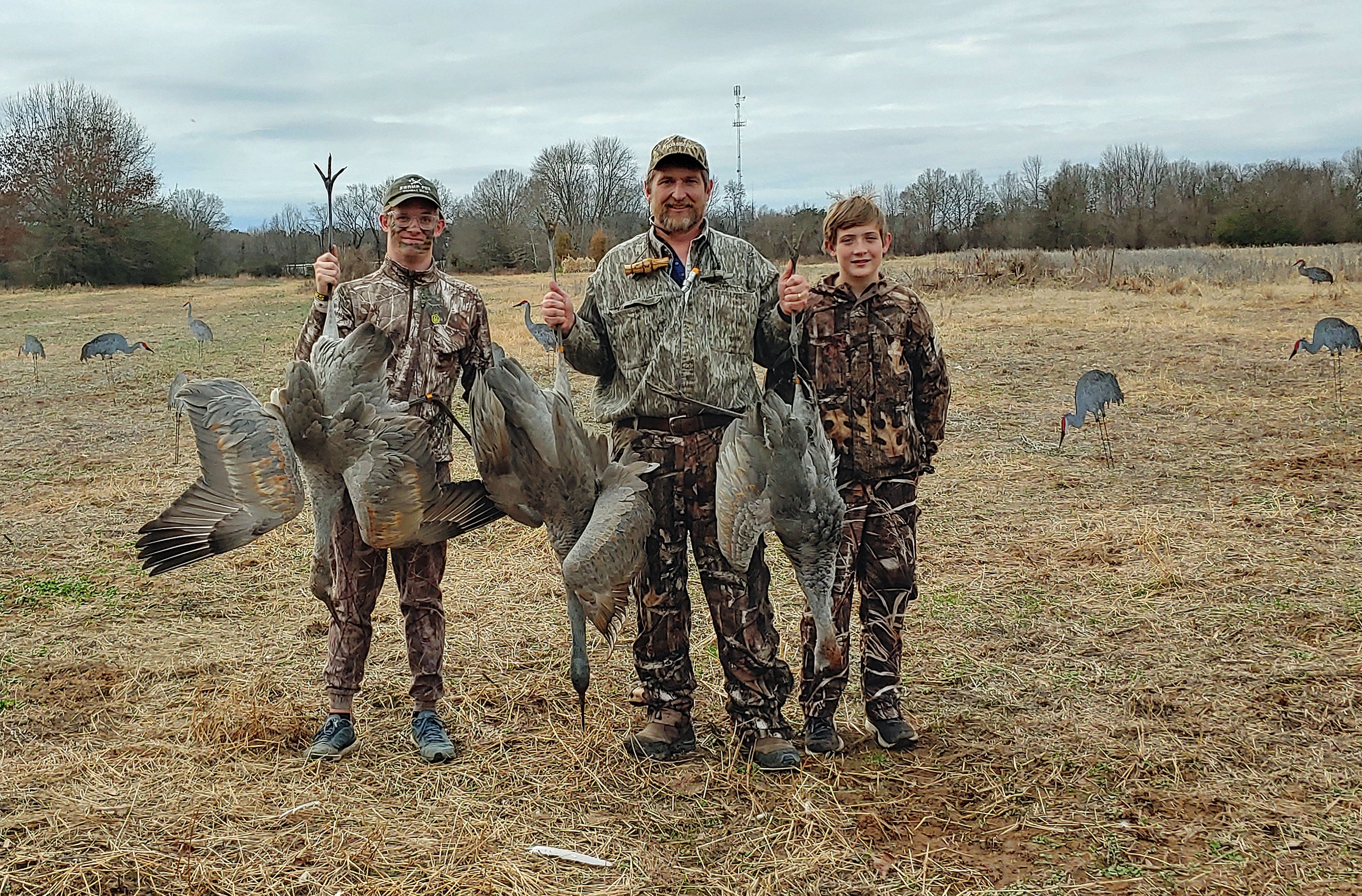By DAVID RAINER, Alabama Department of Conservation and Natural Resources
Another warm winter left Alabama’s duck hunters frustrated, but those who were lucky enough to score permits for the first sandhill crane season in the state in 103 years were elated.
Although not all of the 400 crane permit holders were able to harvest one of the large birds, those who did raved about the new hunting opportunity.
Jason Russell of Gadsden, Alabama, and his 17-year-old son, Grayson, both drew permits, which allowed a harvest of three birds each.
The first order of business was to secure a place to hunt sandhills in the hunting zone in north Alabama. Fortunately, a friend from Birmingham had connections with a landowner near the Wheeler National Wildlife Refuge, and they were granted permission to hunt.
“We were excited to get an opportunity to hunt the sandhills,” said Russell, an avid duck hunter and award-winning decoy carver. “We’d seen them around for years. We really didn’t know the reality of what it would take to kill one.
“Once we were drawn, we thought we’d give it a shot. We bought decoys and got ready. What was interesting this year, everywhere I went, I saw cranes. I saw them near my house. At Weiss Lake, we saw cranes. At Guntersville, we saw cranes. Everywhere we went, we at least saw cranes flying.”
On the morning of the first hunt, the Russells saw several cranes in the field they planned to hunt and saw several more in the air. After setting up their decoys, both full-body and silhouettes, they settled into their blinds.
“Within 20 minutes we had a group of birds fly 15 yards over our decoys,” Jason said. “We ended up letting them go because we were so awestruck that our setup actually worked. We were kind of surprised.
“Another 20-30 minutes went by and groups of two and three came by. On our first hunt, three of us had permits, and we killed six birds on an afternoon hunt that lasted maybe two or three hours. We were pretty excited that you could actually decoy them. After duck and goose hunting for 30 years, this gives hunting a new twist and a new excitement.”
The Russells had planned to hunt cranes just like they would geese in an open field with layout blinds. They soon discovered natural vegetation helped them hide much better.
“There was some scrub brush sticking up,” Jason said. “I thought, well, let’s at least be comfortable. There was enough brush to where we could get hidden. We put our full-bodies out at 20 yards, hid our faces and kept our heads down. We were shooting decoying birds at 15 to 20 yards.”
The hunters left that area undisturbed for three weeks before attempting a second hunt. They were even more awestruck when they arrived at the hunting land. Jason needed two birds to fill his tags, while Grayson only needed one.
“When we got there, there must have been between 200 and 300 sandhills in the field,” Jason said. “After we got set up, three birds came in and I doubled up.”
With only one tag left, the cranes seemed hesitant to decoy. The Russells soon figured out that trying to mix crane hunting and goose hunting might not work very well.
“We had put out full-body goose decoys to try to kill a few geese while we were there,” Jason said. “It was interesting that the cranes seemed to be skirting our decoys. We decided either we were going to have to move or do something different. We made the decision to pull all the goose decoys. By the time we pulled the last goose decoy and got back in the blind, we had a pair of sandhills at 15 yards. My son rolled his out, and we were done. It could have been coincidence that we pulled the goose decoys and we killed one, but I feel like they flared off of the full-body goose decoys.
“We were just catching the cranes traveling from one field to another. I guess they decided to drop into our decoys to see what was going on.”








